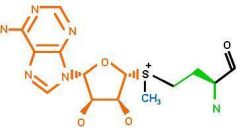
2008/10/08
Abnormal methionine metabolism leads to non-alcoholic fatty liver disease (NAFLD) and cancer.
Researchers at the CIC bioGUNE and the University of Southern California, Keck School of Medicine, in Los Angeles, have published an article in The Annual Review of Nutrition on abnormal methionine metabolism leading to non-alcoholic fatty liver disease (NAFLD) and cancer. NAFLD is a clinicopathological term that encompasses a spectrum of abnormalities ranging from simple triglyceride accumulation in the hepatocytes (hepatic steatosis) to hepatic steatosis with inflammation (NASH); this may lead to hepatic fibrosis and cirrhosis, resulting in increased morbidity and mortality. NAFLD is associated with obesity. With the increasing prevalence of obesity in the general population, NAFLD is now recognized as the most common chronic liver disease in Western world. Among adults, the incidence of NAFLD has increased from 10% in 1980 to 20-40% in 2000.
See a large version of the first picture





